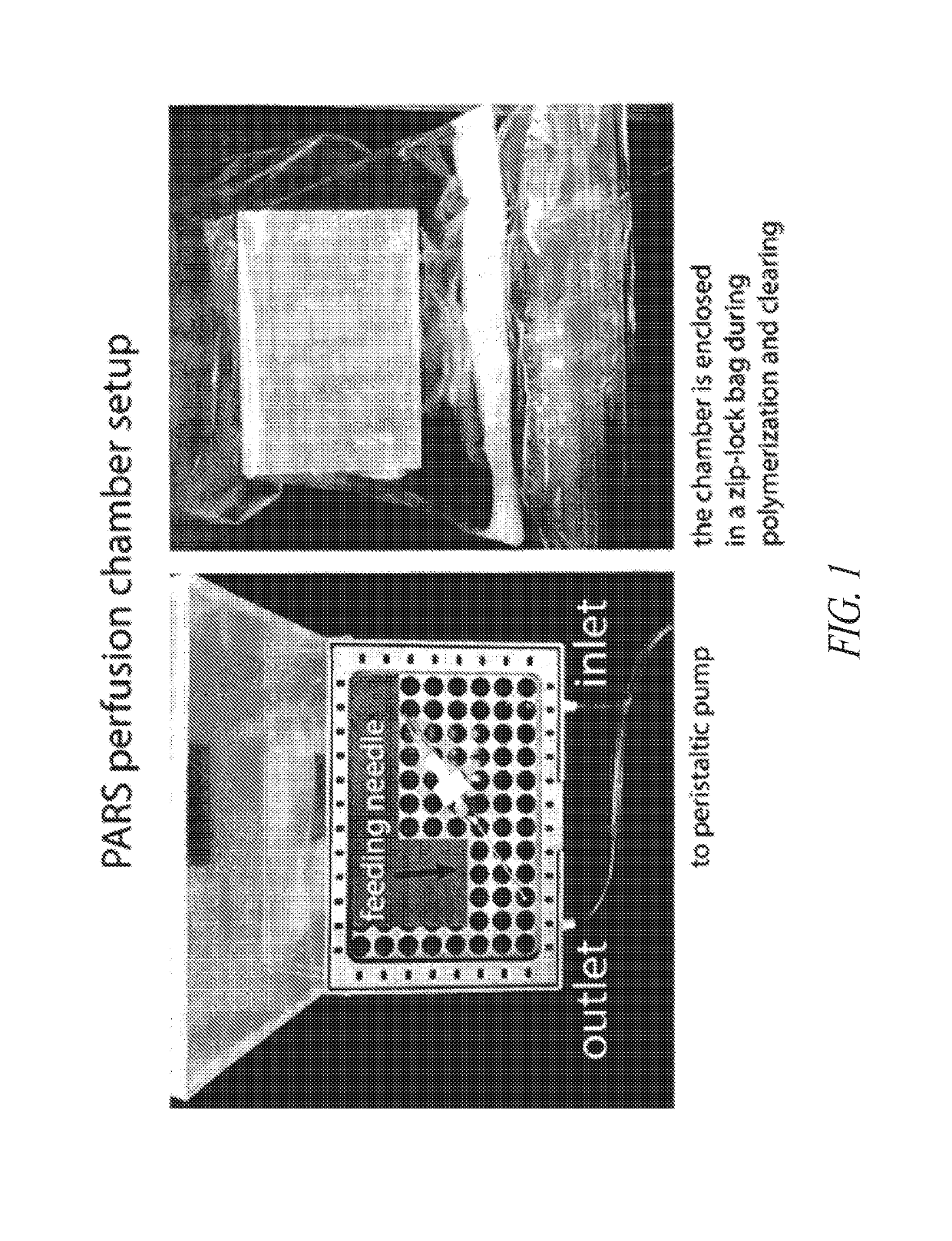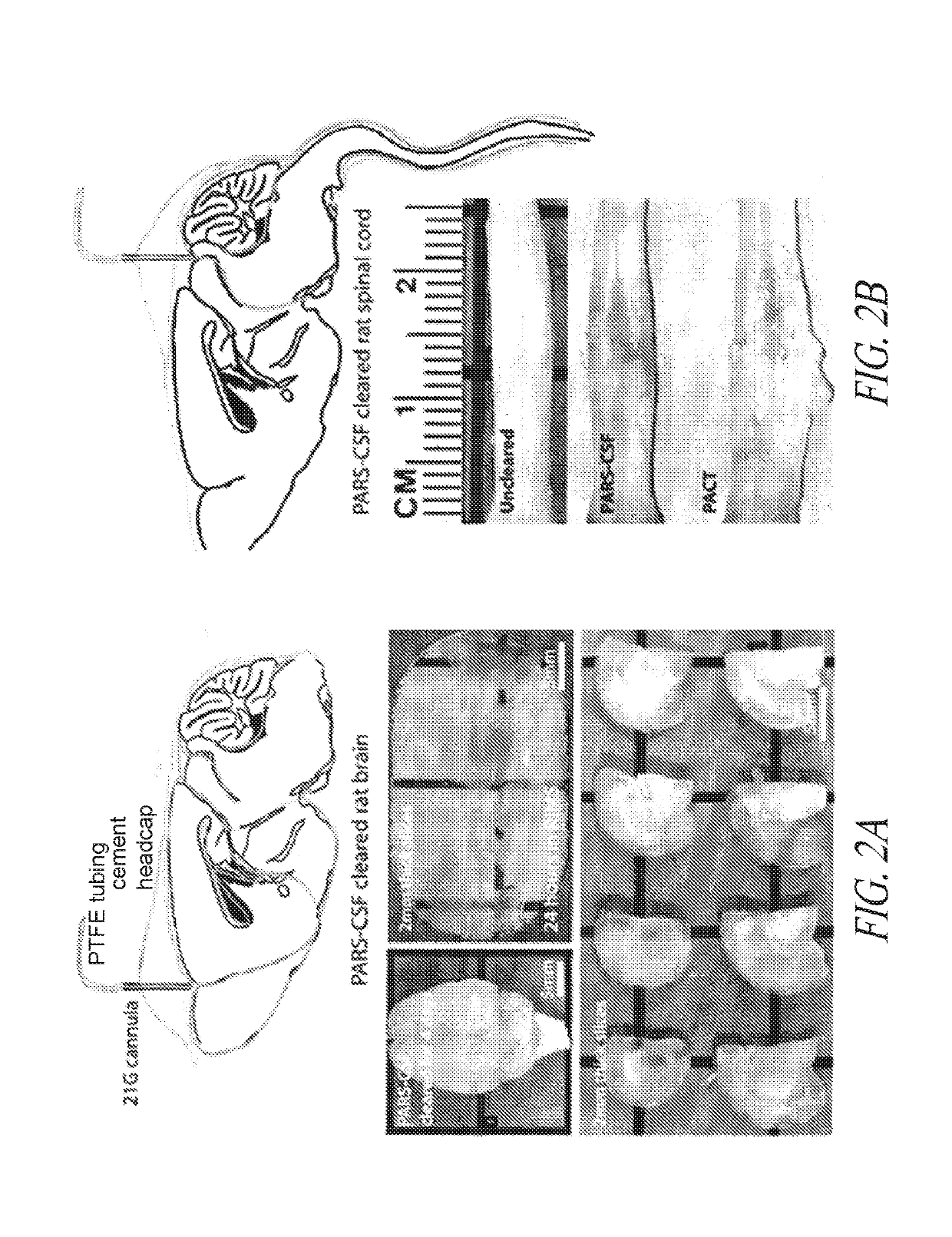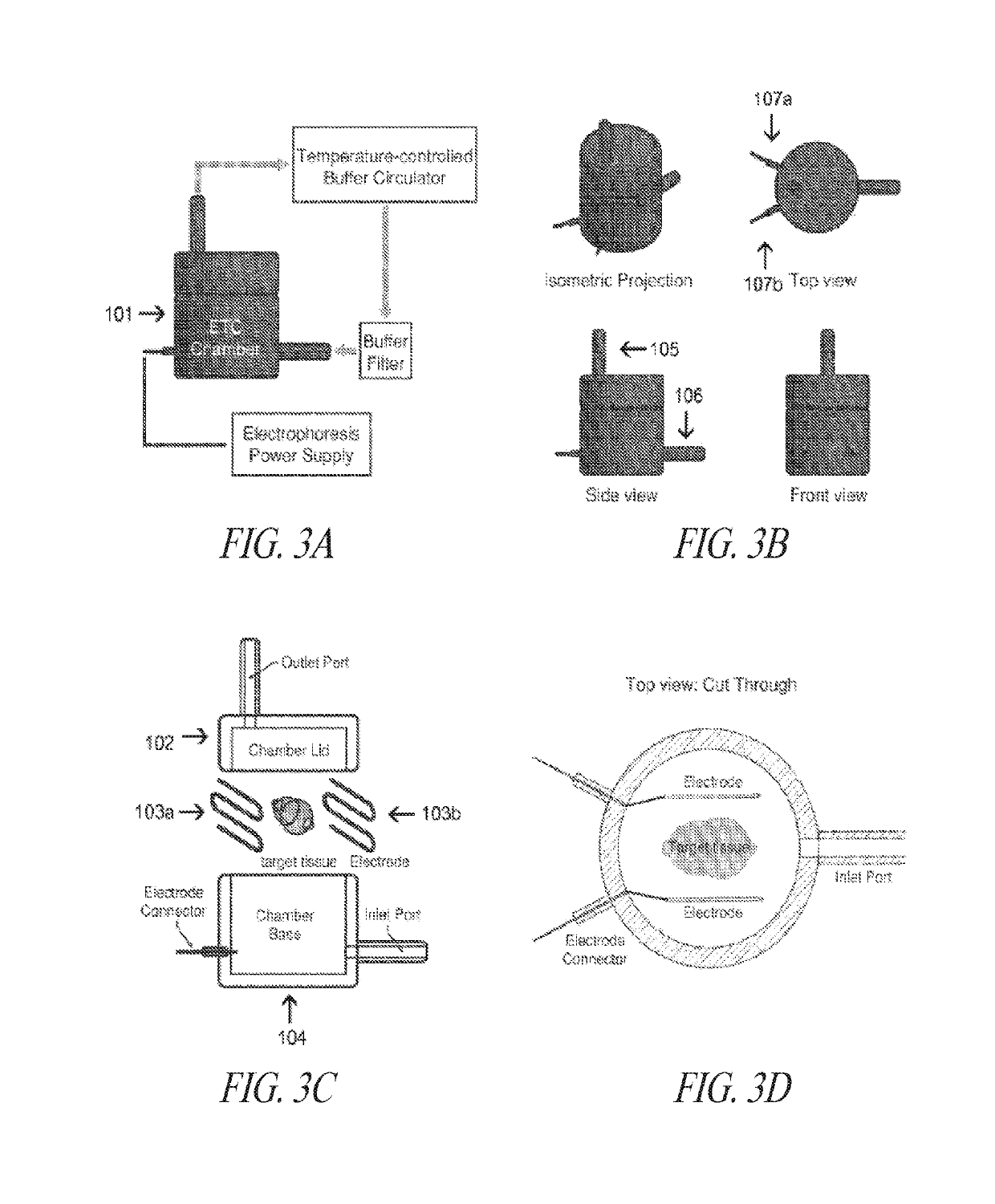Methods for preparing and analyzing tumor tissue samples for detection and monitoring of cancers
- Summary
- Abstract
- Description
- Claims
- Application Information
AI Technical Summary
Benefits of technology
Problems solved by technology
Method used
Image
Examples
example 1
CLARITY Analysis of Tumor Cells, Mouse Xenograft Tumors, and Human Tumors
[0344]Tumor cell lines, xenografts and tumor tissues were processed and analyzed according to methods described herein. These studies demonstrate that the claimed methods may be used to successfully cross-link, clear and label tumor samples using various probes to examine structural features and expression of tumor markers within the samples.
Methods
[0345]Cell Culture, Frozen Pellet Generation, Preparation of Cells for Mouse Xenograft Inoculations
[0346]Reagents and chemicals utilized in this set of experiments are shown in Table 2.
TABLE 2Reagents and Chemicals UsedReagentsVendorCatalog #Borate Buffer 1MVWRPI28341Sodium Docecal SulfateVWR89167-708SDS 20% solution16% ParaformadehydeElectron Microscopy Sciences15710-S(PFA)Triton-X 100Sigma AldrichX100-1LVA-044Wako Chemicals111936540% acrylamideBio-Rad16101402% bis-acrylamideBio-Rad16101421X PBSLonza17-516q10X PBSLonza17-517qRapiClear mountingSunjinLabsRCCS002soluti...
PUM
 Login to View More
Login to View More Abstract
Description
Claims
Application Information
 Login to View More
Login to View More - R&D
- Intellectual Property
- Life Sciences
- Materials
- Tech Scout
- Unparalleled Data Quality
- Higher Quality Content
- 60% Fewer Hallucinations
Browse by: Latest US Patents, China's latest patents, Technical Efficacy Thesaurus, Application Domain, Technology Topic, Popular Technical Reports.
© 2025 PatSnap. All rights reserved.Legal|Privacy policy|Modern Slavery Act Transparency Statement|Sitemap|About US| Contact US: help@patsnap.com



